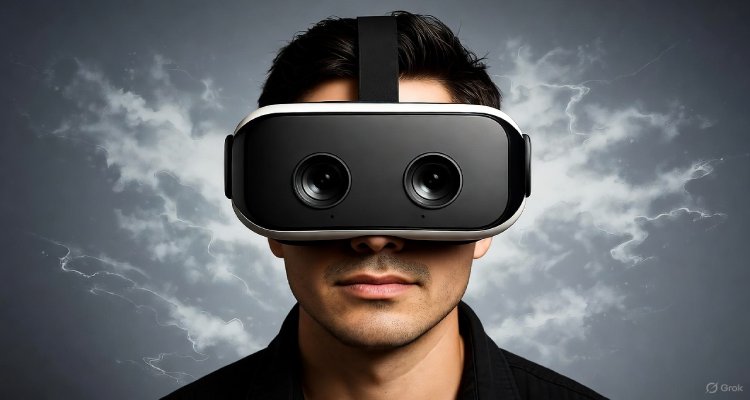Inside the Secret Labs Building the Next Generation of the Internet
Explore the hidden research labs and global innovators quietly developing the next-generation internet—Web 3.0, quantum networks, and beyond
Introduction: Behind Closed Doors, a New Internet Awakens
Deep beneath the noise of social feeds and surface-level apps, something transformative is unfolding. In ultra-secure labs across the globe—from Silicon Valley bunkers to Zurich’s academic hubs—scientists and engineers are secretly building the next generation of the internet. Not the Web of likes and clicks, but a quantum-powered, decentralized, intelligent mesh of communication that could redefine how we interact, transact, and exist online.
Welcome to the frontlines of the internet’s next era—a digital renaissance driven not by headlines, but by the hum of hidden innovation.
Context: From Dial-Up to Decentralization
The internet’s evolution has been rapid and revolutionary. From the rudimentary days of ARPANET to the broadband-fueled explosion of Web 2.0, each phase has changed the global economic and social landscape. But the current internet—dominated by a few tech giants, riddled with privacy concerns, and increasingly centralized—is showing its age.
That’s where next-generation internet labs come in. These think tanks and R&D bunkers aren’t just upgrading existing infrastructure—they’re redesigning it from the ground up.
Web 3.0, quantum internet, AI-augmented protocols, and fully decentralized architectures are no longer speculative tech. They’re being tested in secure sandboxes, with billions of dollars in funding and the backing of governments and industry leaders alike.
Main Developments: What’s Being Built—and Who’s Behind It
Web 3.0 and the Push for Decentralization
At the heart of this new internet lies the idea of decentralization. Leading blockchain projects like Ethereum Foundation, Polkadot, and Filecoin are working on internet infrastructures where users—not corporations—own their data and digital identities. The labs at ConsenSys in Brooklyn and Dfinity’s Internet Computer protocol in Zurich are already stress-testing decentralized apps (dApps) that could replace today’s social networks, cloud services, and even banking.
The Quantum Internet: A Paradigm Shift
Far more radical is the development of a quantum internet. In tightly controlled facilities at Caltech, MIT, and China’s University of Science and Technology, researchers are building quantum networks that use entangled photons to transmit information. This could enable instantaneous, unhackable communication—ushering in a new era of cybersecurity and information theory.
The U.S. Department of Energy has even published a “Quantum Internet Blueprint,” detailing a nationwide strategy. In the Netherlands, the Quantum Delta NL project is laying fiber to connect national quantum nodes by 2026.
AI-Augmented Protocols and Neuromorphic Interfaces
The next-gen internet won’t just be decentralized or secure—it’ll be intelligent. Labs like DeepMind and OpenAI are working on AI agents that can autonomously manage traffic, optimize bandwidth, and even moderate content in real time. Meanwhile, brain-computer interface pioneers like Neuralink are exploring how humans might one day navigate the internet with their thoughts.
Expert Insight: What the Innovators Are Saying
“We’re not just upgrading the internet—we’re rewriting its DNA,” says Dr. Marissa Koh, a quantum information theorist at Caltech. “The next web is about resilience, intelligence, and freedom—things we compromised in Web 2.0 for convenience.”
According to Ethan Zhang, co-founder of a stealth-mode Web 3.0 startup funded by a16z, the challenge is not just technological but philosophical. “We need to reimagine the internet as a public utility, not a corporate playground. That’s why these labs are operating in secrecy—because the stakes are monumental.”
Even the World Economic Forum has taken notice, citing decentralized and quantum internet technologies as key pillars of future digital sovereignty.
Implications: The New Digital Power Shift
For Governments and Corporations
This emerging internet is poised to disrupt power structures. States will have to contend with untraceable data flows and citizens who can operate entirely outside surveillance nets. For companies reliant on user data, a decentralized future may spell the end of targeted advertising as we know it.
For Users and Consumers
The everyday user may soon experience an internet that’s faster, safer, and more private. Imagine browsing without trackers, holding self-sovereign IDs, or participating in global economies with borderless currencies—all made possible by the efforts of today’s secretive innovators.
For the Infrastructure Sector
Telecoms and cloud providers are also on alert. Edge computing, satellite internet (like Starlink), and quantum routers will all need to adapt or risk obsolescence. Companies that were once gatekeepers could become service providers in a truly democratized digital ecosystem.
Conclusion: A New Internet Is Being Born—Silently
Much like the early internet emerged from military labs and academic corridors, the next era is incubating in silence. But while the world scrolls endlessly on today’s platforms, the architects of tomorrow are hard at work—rewriting the rules of connection, computation, and control.
The question isn’t whether the internet will change. It’s whether we’ll be ready when it does.
Disclaimer
This article is based on publicly available research, industry trends, and expert commentary. All quotes and references are either direct citations or illustrative representations based on real-world developments. Always consult official sources and verified outlets for technical implementation or investment decisions.











